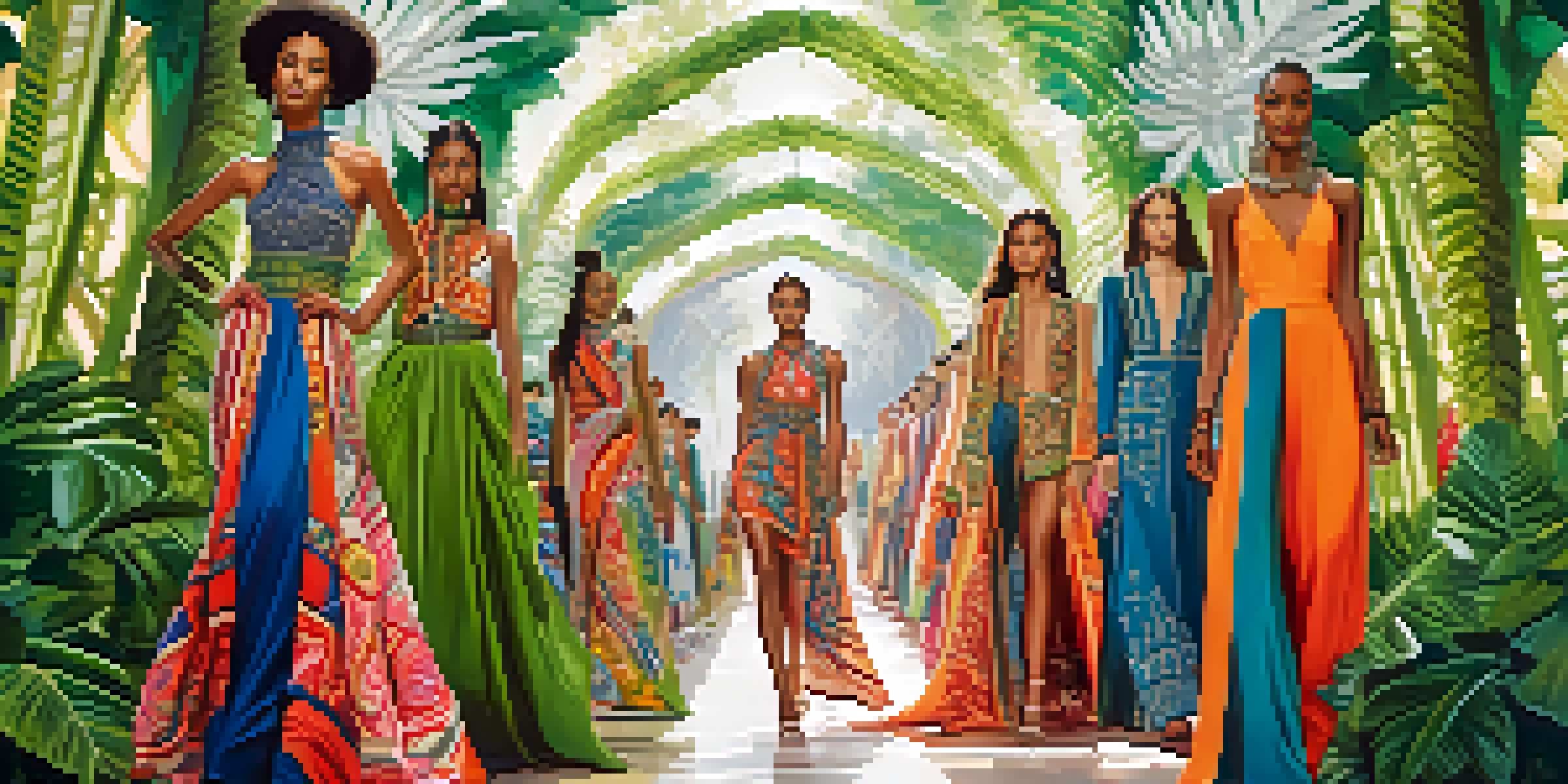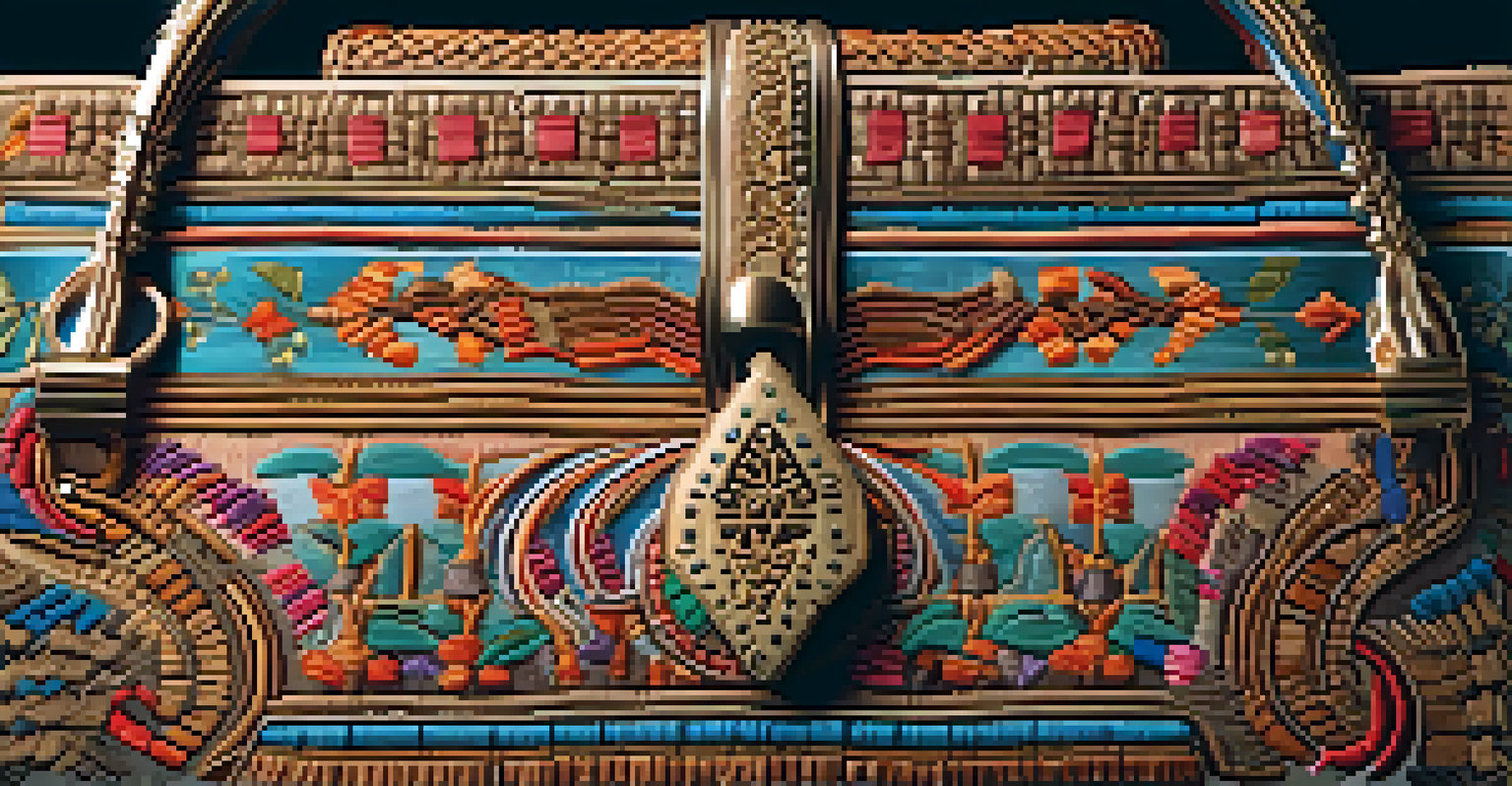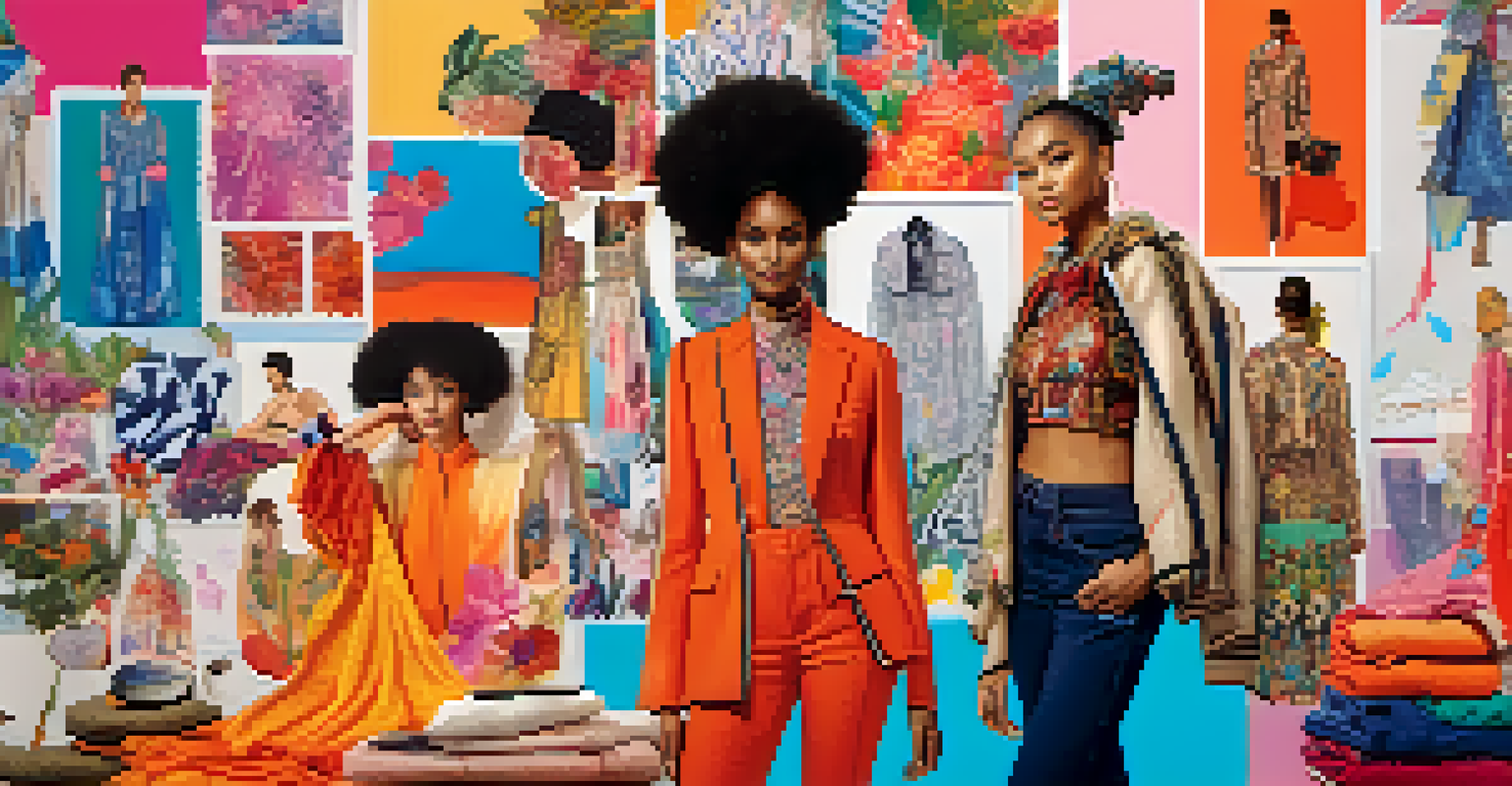Cultural Influences in Luxury Fashion Collaborations Explored

The Intersection of Culture and Fashion
Fashion is more than just clothing; it's a reflection of culture. When luxury brands collaborate with cultural icons or movements, they create pieces that resonate deeply with consumers. This intersection of culture and fashion can transform a simple garment into a narrative that speaks volumes about identity, heritage, and artistic expression.
Fashion is the armor to survive the reality of everyday life.
Take, for instance, the collaboration between Gucci and Harlem's Fashion Row, which celebrated Black culture through stunning designs. Such partnerships highlight the importance of cultural narratives in luxury fashion and how they can elevate a brand's story.
Ultimately, when luxury brands tap into cultural influences, they not only enhance their offerings but also foster a greater understanding and appreciation for diverse backgrounds among consumers.
The Role of Cultural Iconography
Cultural iconography plays a pivotal role in luxury fashion collaborations. By incorporating symbols, colors, and motifs that are culturally significant, designers can create pieces that resonate on a much deeper emotional level. For instance, the use of traditional patterns in modern designs not only honors heritage but also introduces it to new audiences.

Consider the collaboration between Louis Vuitton and Japanese artist Takashi Murakami, which infused vibrant cultural elements into high fashion. This blend of luxury with cultural iconography showcases how brands can innovate while paying homage to their roots.
Culture Shapes Luxury Fashion
Luxury brands enhance their storytelling by collaborating with cultural icons, creating pieces that resonate with consumers' identities.
Such collaborations not only appeal to the aesthetic sensibilities of consumers but also invite them to engage with the cultural stories behind the designs.
Consumer Demand for Authenticity
Today's consumers crave authenticity in the products they buy, especially in luxury fashion. They want to feel a genuine connection to the brands they support, and this desire has led to an increased focus on cultural collaborations. When brands partner with artists or communities, they often emphasize storytelling and heritage, which resonates with consumers seeking meaningful purchases.
Style is a way to say who you are without having to speak.
For example, the partnership between Stella McCartney and Indigenous Australian artists brought attention to sustainable fashion while honoring rich cultural traditions. This authenticity not only enhances the brand's reputation but also builds a loyal customer base.
In this way, cultural collaborations allow luxury brands to differentiate themselves in a crowded marketplace by aligning with consumer values.
Globalization and Cultural Exchange
Globalization has transformed the landscape of luxury fashion collaborations, facilitating cultural exchange like never before. With the world more interconnected, designers can draw inspiration from diverse cultures, resulting in innovative and exciting collections. This exchange enriches the fashion narrative, bridging gaps between different cultural aesthetics.
Take the collaboration between Balenciaga and various international artists, which showcases a fusion of styles and traditions from around the globe. Such partnerships highlight how globalization can foster creativity and broaden the horizons of luxury fashion.
Demand for Authenticity Grows
Consumers are seeking genuine connections with brands, prompting a focus on cultural collaborations that emphasize storytelling and heritage.
However, this also raises questions about cultural appropriation, making it essential for brands to approach collaborations with sensitivity and respect.
The Impact of Social Media on Cultural Collaborations
In the age of social media, cultural collaborations in luxury fashion gain unprecedented visibility. Platforms like Instagram and TikTok allow brands to showcase their partnerships to a global audience, amplifying their reach and impact. This instant sharing of cultural narratives can create buzz and drive consumer interest in a way that traditional marketing cannot.
For instance, the collaboration between Adidas and Beyoncé's Ivy Park line was not only a fashion statement but also a cultural movement that resonated widely online. The engagement from fans and followers illustrates the power of social media in shaping perceptions and driving trends.
As a result, luxury brands are increasingly leveraging social media to highlight the cultural stories behind their collaborations, making them more accessible and relatable to a broader audience.
Sustainability in Cultural Fashion Collaborations
Sustainability has become a critical consideration in luxury fashion, and cultural collaborations often reflect this ethos. As brands partner with local artisans and communities, they can promote sustainable practices while honoring traditional craftsmanship. This approach not only enhances the value of the products but also supports ethical production methods.
For example, the collaboration between Chloé and various artisans from around the world highlights sustainable materials and fair trade practices. This commitment to sustainability aligns with the growing consumer demand for ethical fashion.
Social Media Amplifies Collaborations
Platforms like Instagram and TikTok provide unprecedented visibility for cultural collaborations, driving consumer interest and engagement.
By integrating sustainability into cultural collaborations, luxury brands can create a positive impact while appealing to conscience-driven consumers.
Future Trends in Cultural Luxury Collaborations
Looking ahead, the landscape of luxury fashion collaborations will continue to evolve, driven by cultural influences and consumer expectations. As brands seek to diversify their offerings, collaborations with underrepresented communities and emerging artists are likely to become more prevalent. This shift not only enriches the fashion world but also fosters inclusivity and representation.
Moreover, as technology advances, we may see innovative formats for collaboration, such as virtual reality experiences that bring cultural stories to life in new ways. This could create immersive experiences that deepen consumer engagement and understanding.

Ultimately, the future of luxury fashion will be defined by its ability to adapt and respond to cultural shifts, ensuring that every collaboration tells a meaningful story.